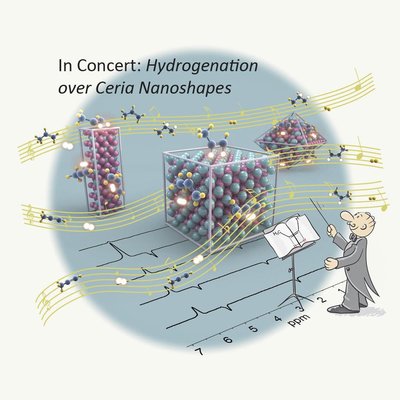Specialized iNANO Lecture: Parahydrogen Enhanced NMR Studies of Heterogeneous Hydrogenation Catalysis
Associate professor Clifford Bowers, Department of Chemistry, University of Florida
Info about event
Time
Location
AUD VI (1510-213), Dept. of Chemistry, Langelandsgade 140, 8000 Aarhus C

Associate professor Clifford R. Bowers, Department of Chemistry, University of Florida, Gainesville, Florida, USAParahydrogen Enhanced NMR Studies of Heterogeneous Hydrogenation CatalysisExciting breakthroughs in hyperpolarization methodologies are rapidly expanding the frontiers of NMR spectroscopy into fields like catalysis, nanomaterials, and biomedical imaging. Parahydrogen Induced Polarization [1-3] using supported metals or pure oxide catalysts [4-6] (hetPHIP) offers a robust, inexpensive and scalable hyperpolarization technique for rapid production of bulk quantities of hyperpolarized liquids and gases. Unique advantages of hetPHIP are the ease of separation of the hyperpolarized product from the polarizing agent and compatibility with a continuous-flow production mode. However, challenges that need to be addressed in hetPHIP are the modest signal enhancement, owing to the low pairwise selectivity, and limited generality. Here we demonstrate a new concept in catalysis which we refer to as pairwise replacement (PR) catalysis. In PR-hetPHIP, two protons of a substrate are replaced with two protons originating from the same parahydrogen molecule. We observe intense PHIP NMR signals simply by flowing a mixture of p-H2 and substrate over the solid catalyst by incorporation of scalar symmetrization order without a change in substrate molecular structure. Understanding the mechanism underpinning this PR-PHIP effect is critical to its further generalization and optimization [6]. Finally, we report the results hetPHIP studies using CeO2 catalysts [7]. Ceria nanoparticles exposing (110) or (100) and (110) were synthesized by a hydrothermal method. We present the facet dependence of the pairwise addition and pairwise replacement on the alkene and alkyne. PHIP NMR has proven to be a powerful new tool for the study of the surface mechanism of hydrogenation catalysis.
Acknowledgements References | |
| Host: Professor Thomas Vosegaard, iNANO & Dept. of Chemistry, Aarhus University |

